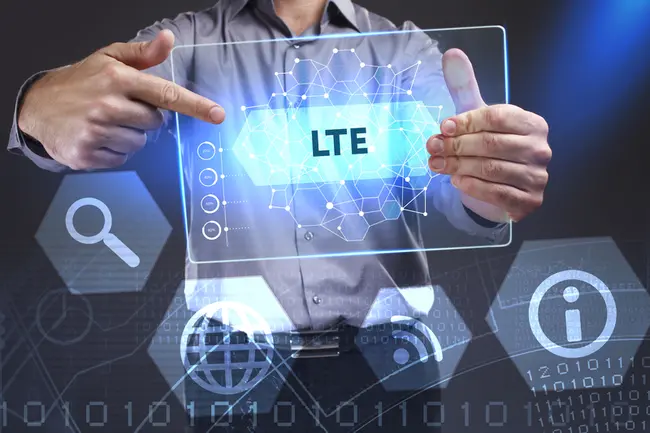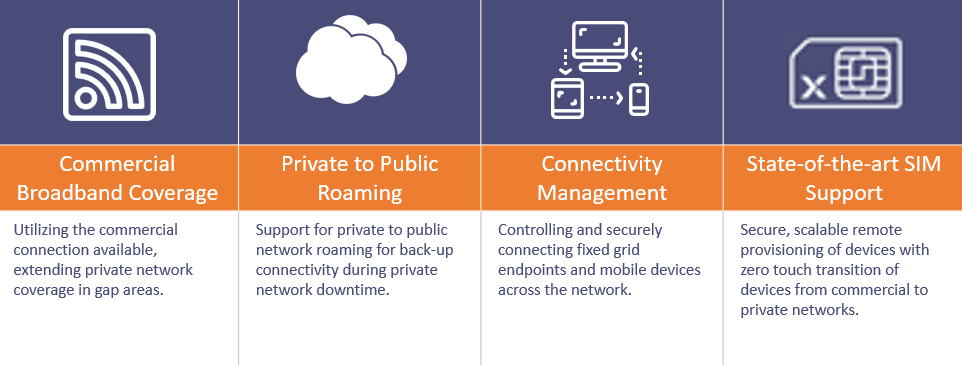
Post
Accelerating 900 MHz Private LTE solutions with device security and control required for grid modernization


这个项目是of the Utility Guide to Private LTE - OCTOBER 2022 SPECIAL ISSUE,click here for more
As today’s power grid evolves to increase resiliency, support DER integration, and meet decarbonization goals, 900 MHz private LTE delivers the security, control and performance utilities need to safely provide clean and affordable energy. An important aspect of a private LTE deployment is supporting a wide array of fixed endpoints and mobile devices. With the increased proliferation of connected sensors and intelligent grid devices, utilities need a solution that integrates all aspects of connectivity management, making it simple, flexible, and secure.
Some utilities are actively deploying private LTE networks, while many others are still evaluating and planning for their private LTE investments. While the advantages of private LTE for utilities are well understood as demonstrated by this growing industry momentum, implementing devices at scale across these networks is not without its challenges.
When deploying a 900 MHz private LTE network, utilities need to plan and prioritize how to load and manage at scale a large number of connected smart grid sensors and devices. Some of the critical priorities to consider include:
- Evolving from legacy and commercial networks to private cellular networks
- Leveraging existing commercial broadband for coverage gaps within the utility service territory
- Increasing the private network resilience with a failover solution to provide back-up connectivity during private networks downtime
Up until now, utilities using broadband relied on commercial cellular networks with devices activated on the network using carrier’s security identity modules (SIM) cards. Today, utilities that deploy a private LTE network can manage their own private SIMs and device connectivity. A comprehensive connectivity management solution that solves for these priorities can be time consuming to build and integrate and require the right in-house expertise. Utilities developing their own solution need to source a connectivity management solution, procure SIMs, and establish roaming contracts with commercial carriers.
After development, utilities would then have to integrate and configure all these elements. SIM profiles would need to be created and work together with the connectivity platform. The platform would have to be integrated with the private LTE core which is in turn connected with the commercial carriers either directly or indirectly. The procurement process and integrations require a lengthy development effort and expertise in each of these domains.
While utilities deploy their private LTE network infrastructure, the operational teams continue to connect devices to either existing utility legacy narrowband networks or to commercial cellular networks. Utilities need to consider deploying these devices leveraging the latest advancements in SIM technology to enable a seamless transition to their own private LTE network when ready.
SIM technology is rapidly evolving for increased management flexibility and security. Traditional physical SIMs are read only. Once it is placed in a device, it contains all the necessary information for the networks it can connect to, and it cannot be modified. A change of configuration requires a change of physical SIM. At large scale, this can challenge the operating expense budget of any utility, which may have to deploy a truck roll to each device. The market is evolving towards the eSIM, an embedded SIM that has read and write capabilities and can be remotely or locally re-configured to subscribe a device to a particular network. While not every LTE device today allows for eSIM capability, the ecosystem is growing rapidly.
When a utility deploys devices with eSIM capabilities with either physical SIMs with read/write capabilities (eUICC capable) or eSIMs, eSIM capable devices can be initially configured with a private subscription that leverages commercial service. When it comes time to migrate the device to the utility’s own private LTE network, the utility can implement that change remotely. The ability to combine connectivity on public and private networks on one SIM and enable secure roaming between them enables a seamless transition from the public networks to the 900 MHz private LTE network, avoiding unnecessary physical manipulation of devices and associated operational costs.
Understanding the need to solve these challenges for the utility industry, Anterix has created a turnkey solution,CatalyX™, to remove complexities in managing connectivity and helping to accelerate private LTE deployments. With CatalyX, utilities can realize the benefits of broadband immediately and can leverage the strengths of commercial operators while they deploy their private LTE network. They can get started by implementing a solution that provides secure, private, and controlled management of devices and extend their reach by integrating commercial coverage. By utilizing an integrated solution like CatalyX that delivers SIMs, connectivity management, and access to multiple commercial LTE networks, utilities can speed time to market and eliminate costly migration. The complexities and risks of utilities building or buying disparate technology solutions and doing the integration themselves are also mitigated.
CatalyX helps to support utilities in their private LTE journey by accelerating onboarding of devices during the deployment of the network, extending the private network coverage in gap areas, and providing back-up connectivity during private network downtime. From their private LTE network, utilities can seamlessly connect devices to commercial networks for primary coverage, or as a fallback, helping them achieve the network coverage and resiliency that is required for mission critical grid applications.

CatalyXsupports utilities in their private LTE journey by:
- accelerating onboarding of devices during the network deployment,
- extending the private network coverage in gap areas and,
- providing back-up connectivity during private network downtime.
From their private LTE network, utilities can seamlessly connect devices to commercial networks for primary coverage or as a fallback, helping them achieving the network coverage and resiliency that is required for mission critical grid applications.
尽管私人LTE网络之旅可以be lengthy and complex, it is essential to support grid modernization. An integrated connectivity management solution like CatalyX can help accelerate the value utilities realize from their 900 MHz private LTE deployments. These turnkey solutions allow the utility to immediately begin deploying field devices that can operate on commercial carrier service until the private LTE network is built out in those areas. With this zero-touch device migration approach, the utility eliminates future truck rolls, minimizing operational expense for utilities with the added benefit of redundant connectivity for the life of the asset.
Interested In Learning More?
Connect with us to learn more about CatalyX.
Get Published - Build a Following
The Energy Central Power Industry Network is based on one core idea - power industry professionals helping each other and advancing the industry by sharing and learning from each other.
If you have an experience or insight to share or have learned something from a conference or seminar, your peers and colleagues on Energy Central want to hear about it. It's also easy to share a link to an article you've liked or an industry resource that you think would be helpful.













Sign in to Participate